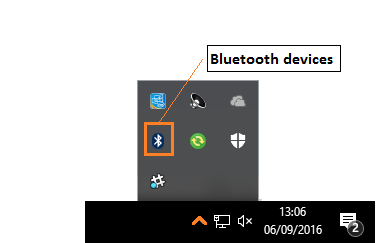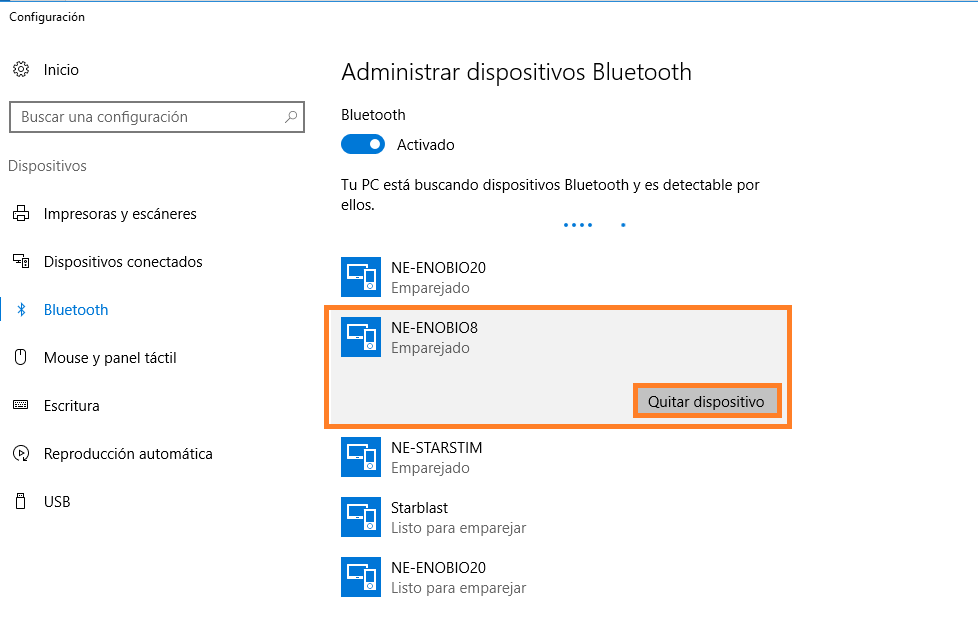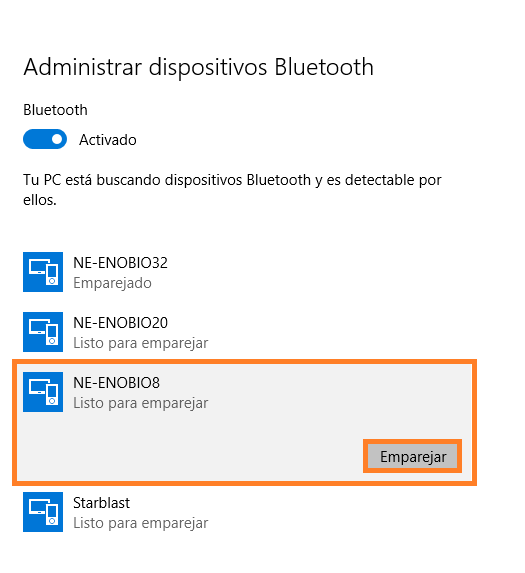Difference between revisions of "Neuroelectrics Frequently Asked Questions (FAQs)"
(→What is the EEG resolution of our devices in µV?) |
(→Does Enobio/Starstim have adjustable filters?) |
||
| Line 89: | Line 89: | ||
=== '''Does Enobio/Starstim have adjustable filters?=== | === '''Does Enobio/Starstim have adjustable filters?=== | ||
''' | ''' | ||
| − | Yes, the NIC user interface allows the user to select a digital filter implemented in software. However, such filters are only used for visualization of the data. Data | + | Yes, the NIC user interface allows the user to select a digital filter implemented in software. However, such filters are only used for visualization of the data and cannot be applied to the recorded data. Data are always recorded in the full bandwidth. |
=== '''Does Enobio/Starstim have variable sample-rates?=== | === '''Does Enobio/Starstim have variable sample-rates?=== | ||
Revision as of 09:08, 22 June 2017
Contents
- 1 Is Enobio / Starstim medically certified?
- 2 Is Enobio/Starstim a Dry Electrode system?
- 3 Is skin preparation critical when using Enobio/Starstim?
- 4 What is the battery life of Enobio and Starstim?
- 5 How does the device communicate with the computer?
- 6 What does the provided NIC software do?
- 7 Can I build custom applications?
- 8 What operating systems are compatible with the Neuroelectrics software?
- 9 What is the EEG data format of produced by Enobio or Starstim?
- 10 Can Enobio /Starstim data be accessed by other applications?
- 11 Is it possible to send TTL triggers to mark Enobio/Starstim data?
- 12 What is the EEG resolution of our devices in µV?
- 13 What is the input noise?
- 14 What is the effective dynamic range in bits?
- 15 Does Enobio or Starstim provide a line noise filter?
- 16 What is the function of the DRL/CMS reference?
- 17 Is the contact of the DRL/CMS electrodes important?
- 18 Which electrodes for DRL/CMS channels should be used with Enobio/Starstim?
- 19 What is a differential reference?
- 20 What is the lowest frequency measurable with Enobio/Starstim?
- 21 What is the Analog bandwidth of Enobio?
- 22 Does Enobio/Starstim have adjustable filters?
- 23 Does Enobio/Starstim have variable sample-rates?
- 24 Does Enobio/Starstim have an adjustable Analog Gain?
- 25 What is the input impedance of your EEG amplifiers?
- 26 What is the precision of the 3-axis accelerometer data in Enobio/Starstim?
- 27 What type of SD cards are recommended?
- 28 I was able to connect my device with NIC but suddenly I can not connect it anymore. What can I do?
Is Enobio / Starstim medically certified?
Enobio and Starstim are CE certified medical devices. They are classified as investigational devices under US federal law.
Is Enobio/Starstim a Dry Electrode system?
Yes, our devices can be used in dry mode for EEG recording (not for stimulation). We provide EEG dry electrode front-ends for the forehead and scalp. The two CMS/DRL electrodes require gel to increase CMRR and improve immunity to artifacts.
Is skin preparation critical when using Enobio/Starstim?
No, the system can be used without the usual skin preparation (scrubbing), although scrubbing will improve signal quality. Preparation for an EEG measurement is very simple, just fit the electrodes to the headband or cap, place it on the head and ensure a good contact between the electrodes and the skin. Cleaning the CMS/DRL application area and/or scrubbing a bit is recommended since they provide a common ground to the other electrodes.
What is the battery life of Enobio and Starstim?
Enobio has a battery life of >16 hours on a full charge. Starstim's battery life will vary depending on use (EEG or Stimulation). An indication is that for 50% time share of EEG/Stimulation use, battery life is > 8 h.
How does the device communicate with the computer?
NIC2.0 is prepared to interact with Neuroelectrics devices that use Bluetooth, WiFi and/or USB. Choose the type of connection compatible with your device.
For wireless connections with Windows systems, we provide a Bluetooth dongle with the system that has to be used only if your computer does not has Bluetooth integrated. Note that dongle is not compatible with Mac OS X system.
What does the provided NIC software do?
Enobio/Starstim's software (Neuroelectrics Instrument Controller or NIC) is an application (Windows, OS X) that manages all aspects of device control, including data recording, data display, montage preparation, brain stimulation protocols and wireless communication between the device and the host computer. NIC designed as a generic Neuroelectrics Instrument Controller, and it can handle Enobio and Starstim class devices. It also offer interactivity with our devices using other softwares, including Matlab.
Can I build custom applications?
Yes, a fully documented API is provided for custom applications. The NE API consists of a set of classes that permits the access to the Enobio or Starstim device and the data that it provides. The main class to access the device is Enobio3G. This class provides methods for opening the device, starting and stopping the data streaming and configuring the device. The Neuroelectrics API for 5G devices will be available from December 2017.
What operating systems are compatible with the Neuroelectrics software?
NIC is currently available for Windows (Vista, Windows 7/8/10) and MAC OS X ( > Snow Leopard).
What is the EEG data format of produced by Enobio or Starstim?
Enobio and Starstim can write data in several formats. From our simple, full 24 bit ASCII file of tab delimited columns (our ".easy" data format) to the (16 bit) EDF+ standard. You can save EEG, accelerometry (3 axis) and data markers using these formats. Check the Files and Formats section for more details.
Can Enobio /Starstim data be accessed by other applications?
Yes, NIC provides a TPC/IP socket in order to stream data to any TCP/IP capable application in real-time. Please see Interacting with NIC.
Is it possible to send TTL triggers to mark Enobio/Starstim data?
Yes, we provide a TTL interface for this purpose. See the TTL User Manual.
What is the EEG resolution of our devices in µV?
The EEG signal resolution is 0.048 µV (dynamic range from -0.4 to 0.4 V). To be precise, 0.4 / (2^23 - 1) V = 4.768E-8 V = 47.68nV (LSB). The smallest measurable signal is determined by the amplifier noise level. Amplifier noise for low frequencies is 0.5 μV rms.
Of course, using ERP-like paradigms where there is intense averaging, smaller signals than this can be detected.
What is the input noise?
The background EEG noise is 10-100 µV which is much higher than the Enobio/Starstim amplifier noise. Device electronic noise adds only a few percent to the total noise level.
What is the effective dynamic range in bits?
The dynamic range is 24 bit.
Does Enobio or Starstim provide a line noise filter?
The devices does not apply a line noise filter. Instead, the NIC software optionally uses a real-time 50/60 Hz line noise cancellation algorithm that conserves the original signal. This filter can optionally be applied by the user to the recorded data.
What is the function of the DRL/CMS reference?
The Driven Right Leg (DRL) and the Common Mode Sense (CMS) connections correspond to the electrical reference, or "ground", of the system. First, the CMS is the reference channel, compared to which all the EEG signals are measured. Secondly, the DRL is responsible for bringing the potential of the subject as close as possible to the "zero" of the electrical system.
Is the contact of the DRL/CMS electrodes important?
Yes, the DRL/CMS contact is very important for high quality measurements, because it reduces the noise, mainly the 50Hz, and the drift of the EEG signals. For stimulation channels, the CMS/DRL contact is used to perform the impedance check of the electrodes. Please follow the procedures outlined in the User Manual to achieve best performance.
Which electrodes for DRL/CMS channels should be used with Enobio/Starstim?
There are two options to use the DRL/CMS: using 2 sticktrodes or using 1 earclip. The pair of sticktrodes should be placed on the mastoid and as close as possible to each other. The sticktrode for CMS should be placed slightly superiorly to the one for DRL. On the other side, the earclip is a dual electrode used to connect both DRL and CMS channels to the same earlobe (left or right).
What is a differential reference?
Any electrode(s) can be used as a differential reference for the other channels; the choice is made entirely in software. When no reference is selected in our software, the signals are displayed with respect to the CMS electrode. The use of a differential referencing improves the CMRR of the measurements and therefore the signal quality. Such referencing can be done offline, once the data is recorded. Choosing a reference in NIC has an effect only on visualization: our data is always saved raw (reference to the CMS electrode).
What is the lowest frequency measurable with Enobio/Starstim?
Our devices allow for measurements of signals from DC to 250Hz and expands the low frequency domain to true DC.
What is the Analog bandwidth of Enobio?
The analog bandwidth of the signal is DC to 125Hz.
Does Enobio/Starstim have adjustable filters?
Yes, the NIC user interface allows the user to select a digital filter implemented in software. However, such filters are only used for visualization of the data and cannot be applied to the recorded data. Data are always recorded in the full bandwidth.
Does Enobio/Starstim have variable sample-rates?
No, Enobio uses a sampling rate of 500Hz per channel for EEG (100 SPS for accelerometry data). Optionally, we provide 1000 S/s systems. Contact us for more information.
Does Enobio/Starstim have an adjustable Analog Gain?
No, the Enobio is provided with a fixed analogue gain. This value is selected to accommodate large artifacts and electrode drifts without loss in signal performance. It is possible to use different gains for special applications. If you would like to explore a better SNR at the ADC stage please contact the Enobio support team.
What is the input impedance of your EEG amplifiers?
The DC input impedance of the amplifiers is 1GOhm. However, input impedance is not the best measure of dry electrode quality. Common-Mode Rejection Ratio is a better measure of the electrode quality, Enobio provides 115 dB of CMRR. Starstim.
What is the precision of the 3-axis accelerometer data in Enobio/Starstim?
The precision is 4mg/LSB (10 bit - +-2g, with sampling at 100 S/s).
What type of SD cards are recommended?
For optimal performance, fast micro SDHC (Micro Secure Digital High-Capacity) cards are recommended (UHS-I or higher, Class 10). Examples (Jan 2014) include Sandisk 8GB microSDHC Ultra (UHS-I) or Samsung MicroSDHC Plus, with writing speeds over 30 MB/s. An 8GB size card will be able to hold very long recordings (>10 hrs).
I was able to connect my device with NIC but suddenly I can not connect it anymore. What can I do?
If your device is paired with the computer but does not connect with NIC, the best option is to remove the device from the Bluetooth configuration list of your computer.
Once removed, switch OFF/ON the device and go to Bluetooth configuration again.
In the Bluetooth devices list, it will appear again the device to pair. If you select pair, you will be able to connect again with your device. Sometimes, it is asked a password to connect with the device. The password is: 9845.
Finally, if you try to connect again with NIC, the device will connect with the software showing the yellow LED establishing connection with the device.


